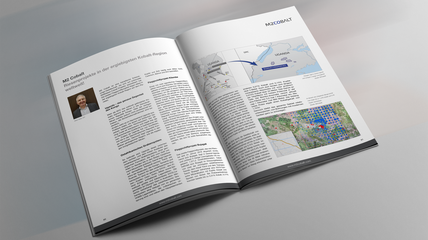Battery Metals Report 2019
The electric mobility boom is just getting underway - without lithium, cobalt and vanadium, nothing is turning!
Energy turnaround, ban on diesel driving, nuclear phase-out, climate change - these and many other terms used in our daily language have led to a true turn of events in recent years that hardly anyone thought possible 25 years ago: The leap from the age of fossil combustion and consumption as immediate as possible to the decentralisation of energy production, the corresponding need for on-site storage and, ultimately, to a true revolution in mobility. After more than 100 years of combustion engines, the next stage of development is finally being ignited, and that is called "electro mobility".
The heart of every electric vehicle is not only the motor but also the energy storage device, i.e. a rechargeable battery. In the meantime, the lithium-ion battery has emerged as a clear favourite. In addition to lithium, this requires larger amounts of cobalt, nickel, manganese or iron ions, depending on the type of battery.
In addition to electromobility, the market for decentralized energy storage systems is also playing an increasingly important role. The virtually explosive expansion of energy generation from wind farms or solar cells is a huge step forward in terms of environmental protection, but an enormous challenge for the electricity grids. This is because renewable energy sources often exhibit extreme fluctuations in power generation. In the short term, enormous overcapacities of electricity arise, some of which are not needed at all. This can be remedied by storage facilities that initially absorb the excess energy and later release it back into the grid when needed, i.e. when there is a threat of undersupply. The vanadium redox accumulator plays a decisive role in this process.
On the whole, there are signs of a supply shortfall in the lithium, cobalt and vanadium markets with immediate effect, as the increase in demand is likely to (far) exceed the increase in supply in the future. As there is no end in sight to the increase in demand beyond 2025, and as there are no major production projects worth mentioning in the pipeline, this situation is likely to continue for the foreseeable future.
This report provides insightful information about the battery metals sector and interviews with industry experts and executives. The presentation of a number of interesting companies that are suitable for speculation on rising battery metal prices completes the report.









